By Dan Weisz
Here are a few other ‘random’ photos that I’ve been saving over the past month or so.
Enjoy.
On a hazy spring day, I saw this American Kestrel on a saguaro in Altar Valley. My friend and I had seen a pair of kestrels in this spot over a few weeks and assume that this male was half of the nesting pair that may have been using this saguaro cavity for their nest. Kestrels are America’s smallest falcons and are cavity nesters and in the Sonoran Desert, most cavities are those made by Gila Woodpeckers in saguaro cacti.
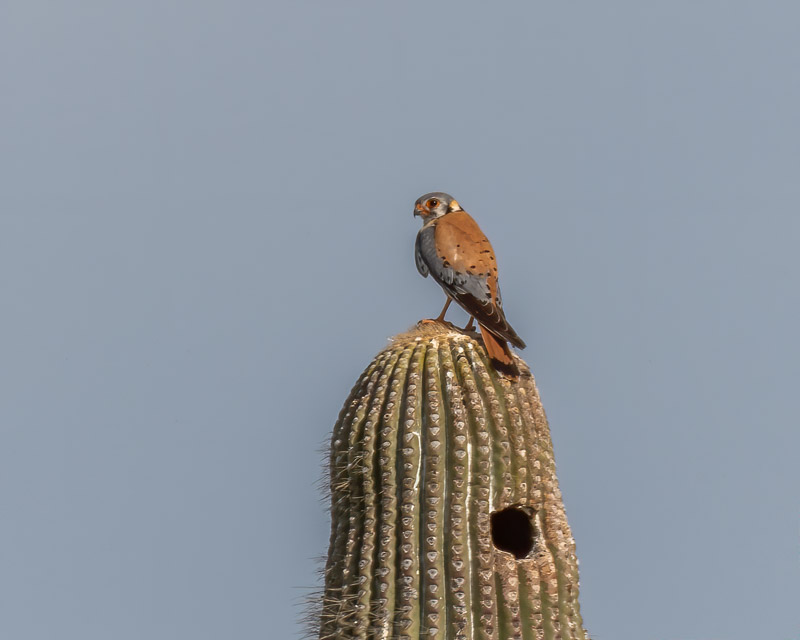
This Black-tailed Gnatcatcher was in an ocotillo in our cul-de-sac. A noisy little bird, it always sounds like it is scolding someone: https://www.allaboutbirds.org/guide/Black-tailed_Gnatcatcher/sounds
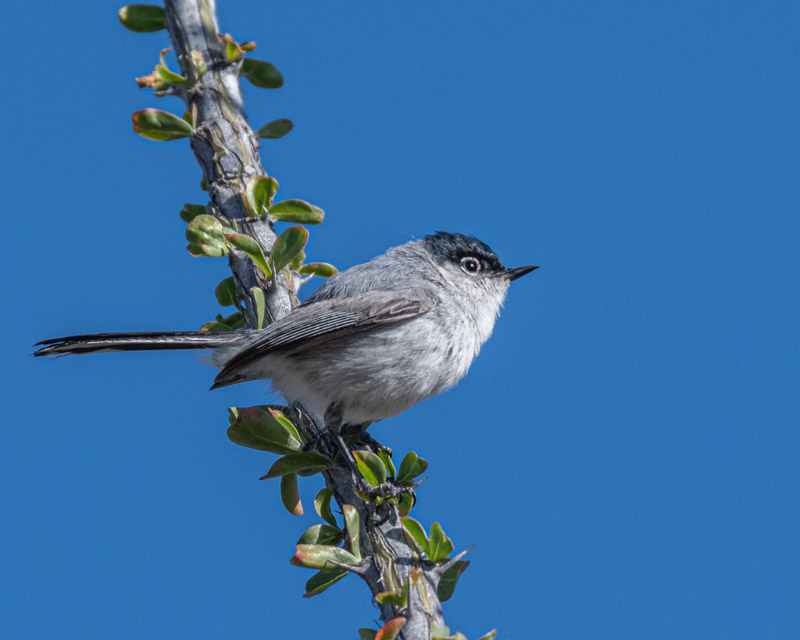
The Fiery Skipper Butterfly was enjoying our lantana flowers. Fiery Skippers are about one inch long. The wings of these butterflies always remind me of some kind of jet aircraft.

Because we have seed socks full of nyjer seeds, we have many Lesser Goldfinches in our yard. Because of the lack of yellow on this bird, it is probably one of this spring’s youngsters.

Earlier this spring we saw another youngster while on our morning walk. This juvenile Phainopepla has the crest and body shape of an adult. It is gray as first year young are but you can also tell this is a young bird by the light bill on it. Young birds have light beaks/bills to provide an easier-to-see target for their parents during feeding time. Also, this bird allowed us to approach it more closely than an adult would. That is definitely the behavior of a young bird who doesn’t know any better.
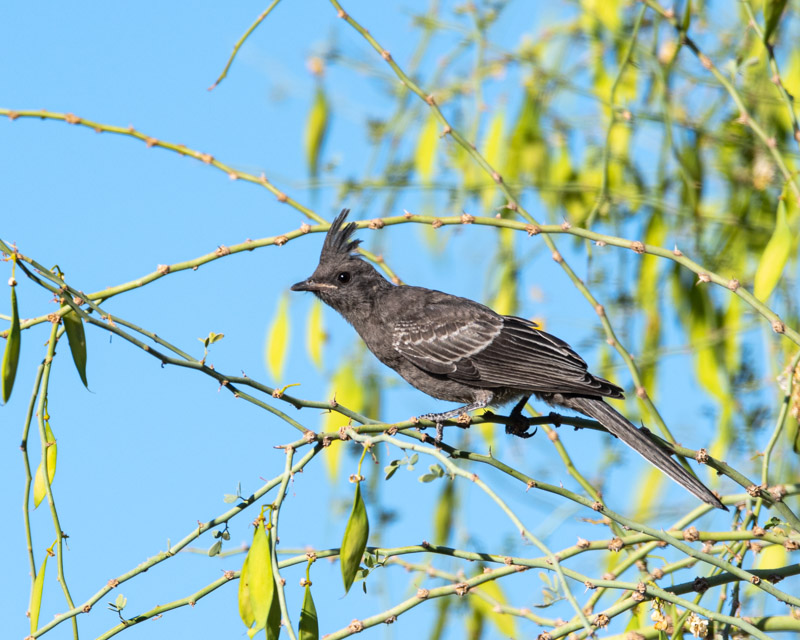
Another look at the light colored beak of this Phainopepla. If this bird is female, it will remain that gray color as it molts into adult plumage. If it is a male, it will molt into that shiny, glossy look of an adult male. And juvenile Phainopepla birds have black eyes unlike the bright red of adults.
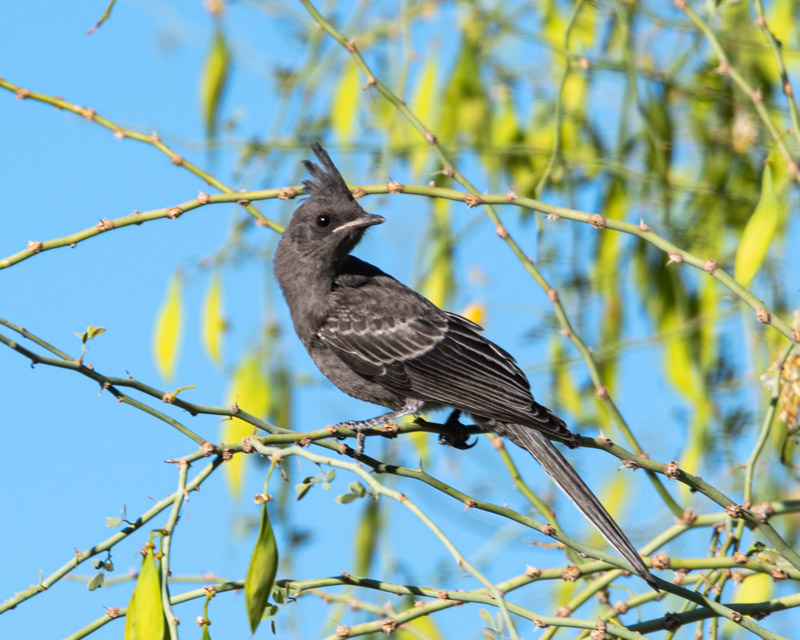
I was out past dark observing the Western Screech Owls when I heard an unmistakeable call from the bottom of the driveway. Most birds aren’t out at night so I went to investigate and found this Pyrrhuloxia feeding on the red fruit of a saguaro. You can see the dark night sky but with the help of a flash, I was able to take this bird’s photo. I guess he wanted a late, bedtime snack.
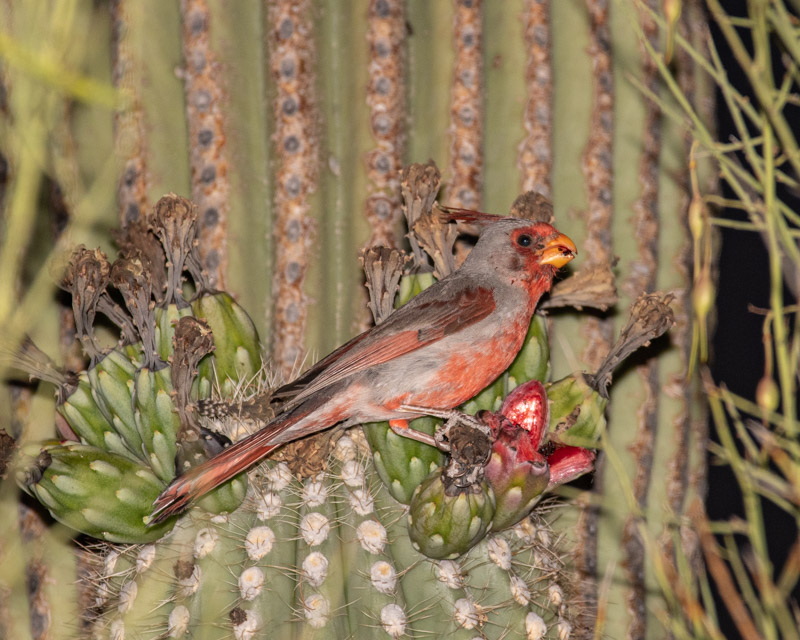
A friend let me know that her neighbor had a roosting Lesser Nighthawk in their backyard. Indeed, this bird was sitting out in the open near some very sparse shade. It was resting on slightly sloped land. The neighbor had indicated seeing an egg on the ground when the bird flew off in the evenings. While I didn’t see the egg, I could see the brood patch on the breast feathers of this bird. See the “part” in her feathers? That tells us that she is indeed sitting on an egg.
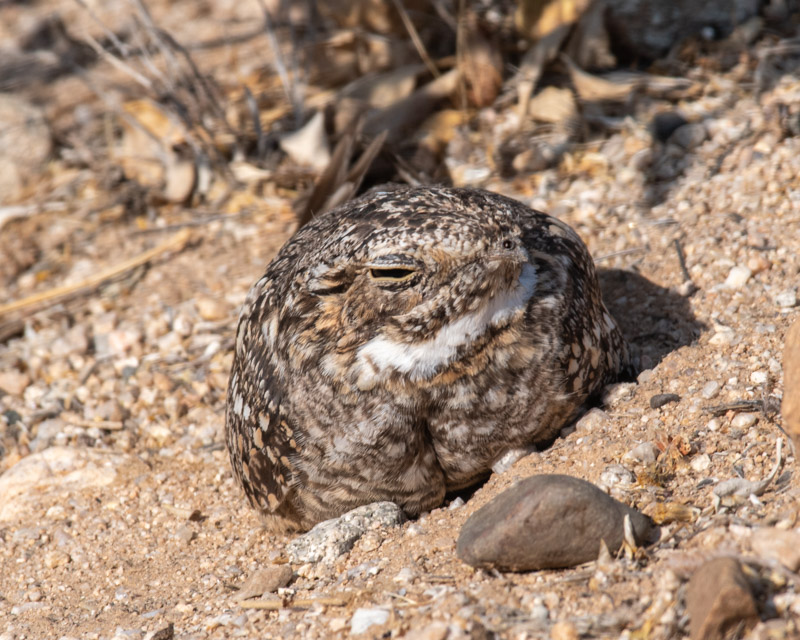
And I spent a bit more time watching the Brown-crested Flycatchers working very diligently bringing food to babies in their nest. The behavior was fascinating to watch and these photos capture the grace of the flight to and from the saguaro nest cavity.
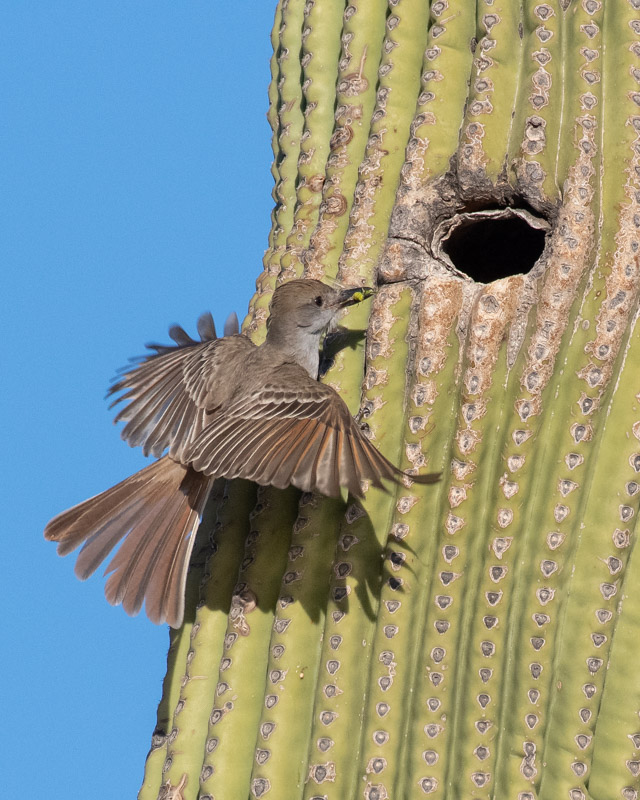
Flight shadow on the saguaro!
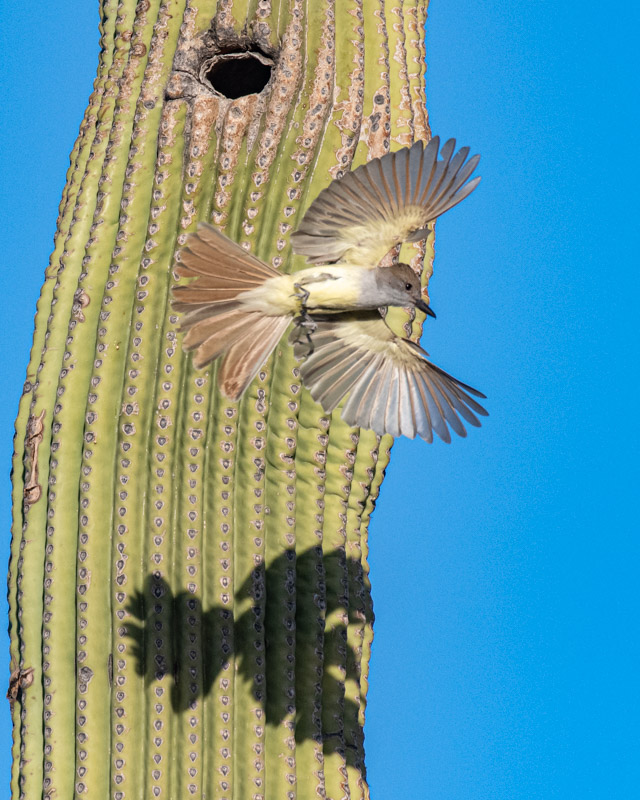
This Brown-crested Flycatcher is probably from another pair. I saw it in my front yard, about a half mile from the saguaro nest. These birds always look happy when their beak is open.
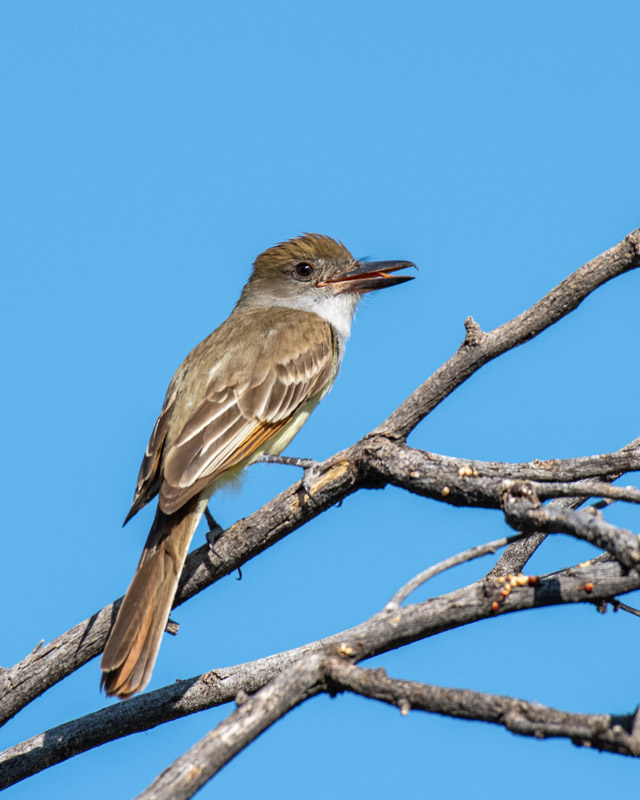
These photos take care of most of my “leftovers”. The themes return next!
